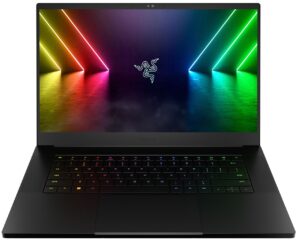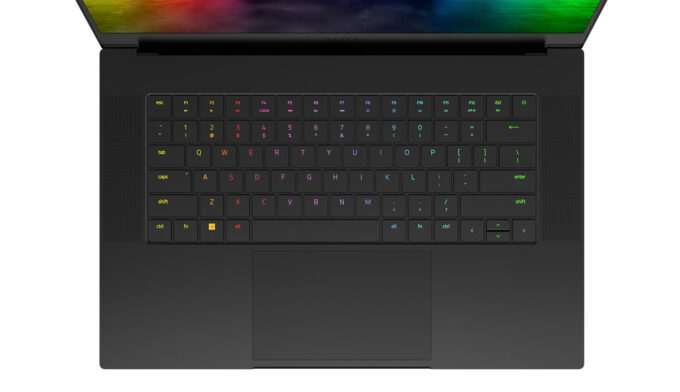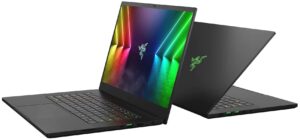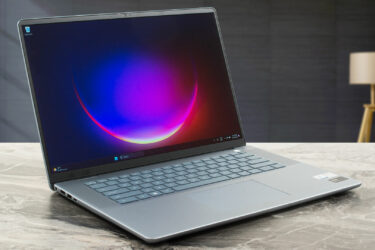[Video Review] Razer Blade 15 (12th Gen Intel) – If the MacBook could game, it would be a Blade 15
Razer Blade 15 (Early 2022) in-depth review
Razer laptops are considered to be the "MacBooks" of the gaming market. The main reason for that is the fact that they never disappoint when it comes to quality. Also, all of the machines, coming from the former pro gamer, have a somewhat uniform design.This helped the company to establish brand recognition, better than arguably all its competition. Also, the triple-headed Snake does its fair share of the heavy lifting in this aspect.But you know, all that we just said could easily be empty words, if it wasn't for the pure gaming experience Razer laptops provide. The Blade 15 (Early 2[...]
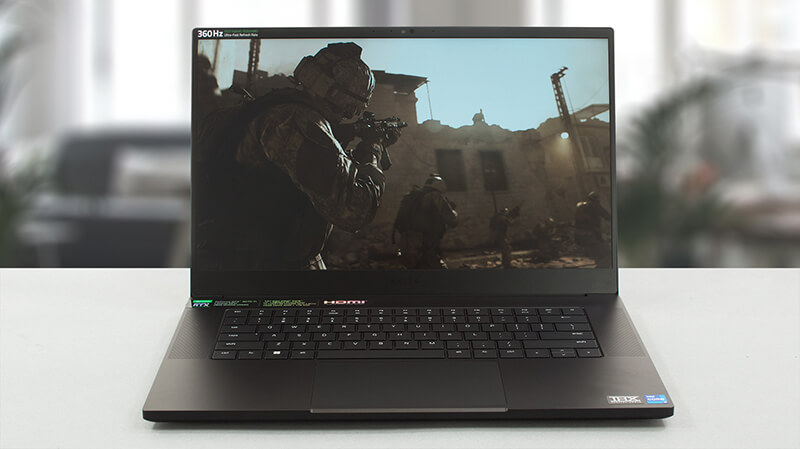
Pros
- 2x M.2 PCIe Gen 4 slots, 2x RAM SODIMM slots in dual channel
- Covers 96% of the sRGB color gamut and has accurate color representation with our Gaming and Web design profile (360Hz 1080p panel)
- Snappy panels with quick response times
- Vapor chamber cooling system
- Thunderbolt 4 + IR face recognition + SD card reader
- Wi-Fi 6E
- Has a MUX switch
Cons
- Subpar battery life
- Its keyboard is not ideal for gaming
- HDD/SSD
- up to 1000GB SSD
- M.2 Slot
- 2x 2280 PCIe NVMe 4.0 x4 See photo
- RAM
- up to 64GB
- OS
- Windows 11 Home, Windows 11 Pro
- Battery
- 80Wh
- Body material
- Aluminum
- Dimensions
- 355 x 235 x 16.99 mm (13.98" x 9.25" x 0.67")
- Weight
- 2.02 kg (4.5 lbs)
- Ports and connectivity
- 3x USB Type-A
- 3.2 Gen 2 (10 Gbps)
- 1x USB Type-C
- 3.2 Gen 2 (10 Gbps)
- 1x USB Type-C
- Thunderbolt 4, Power Delivery (PD), DisplayPort
- HDMI
- 2.1
- Card reader
- SD
- Ethernet LAN
- Wi-Fi
- 802.11ax
- Bluetooth
- 5.2
- Audio jack
- 3.5mm Combo Jack
- Features
- Fingerprint reader
- Web camera
- Full HD
- Backlit keyboard
- Microphone
- Array Microphone
- Speakers
- Stereo Speakers, THX Spartial Audio
- Optical drive
- Security Lock slot
- Kensington Lock
All Razer Blade 15 (Early 2022) configurations
[Intro]
If you truly want a mix between an office machine and a gaming laptop, you’ve got the shell out the cash for a Razer Blade. Today we’ve got the 15-inch model for you, which is stacked with up to a Core i9-12900H and an RTX 3080 Ti, specs that are outright scary to see in a laptop as portable as this one.
[Design]
It comes with a fully aluminum chassis and a super minimal boxy design. Of course, the green Razer logo is present on the back, but with the matte finish, the device is definitely appropriate for an office setting. It also weighs only 2.02 kg, while having a profile of 17 mm, which is insane when you have to factor in the cooling that needs to be present here (more on that a bit later).
[Input devices]
Taking a look at the base, we find massive speaker grills on the sides, as well as a keyboard with big keycaps and no NumPad. Typing on it feels like you’re using a MacBook, as the key travel is short, but the keys are very tactile and clicky. The touchpad, on the other hand, is a work of art, with a glass surface, smooth gliding, and accurate and responsive tracking.
[Ports]
Moving to the sides, we see a decent selection of ports. The right side comes with an SD card reader, a Thunderbolt 4 port, one USB Type-A 3.2 (Gen. 2) port, and an HDMI 2.1 port. Switch sides, and you see the rest, which includes the power plug, two more USB Type-A ports, one USB Type-C 3.2 (Gen. 2) port, and a 3.5 mm audio jack.
[Display]
There are three display options, but we settled for a 360Hz Full HD IPS panel. It gets plenty bright, at 340 nits, while also showing 96% sRGB coverage. Ultimately, it’s a display for esports players who want to get the smoothest experience in FPS games and similar titles.
Paired with our Design and Gaming profile, the panel gets exceptionally accurate, with a dE value of 1.0, which means that you can do a lot of Design and color grading on it.
We’ll have our Display profiles linked in the description below.
[Sound]
The front-firing speaker setup doesn’t disappoint, providing clear audio with good quality. The frequency range is clear of any noticeable deviations, so the sound appears uniform and clear at all volume ranges.
[Performance]
The machine that we have here has a Core i7-12800H and an RTX 3070 Ti. The performance output of the Core i7 matches laptops like the Acer Predator Triton 500 SE with a similar i7-12700H. Its closest competitor, the MSI Stealth GS66 delivers a higher Cinebench score while having practically the same chip.
As for the 3070 Ti graphics, it performs similarly to the units inside the Predator Triton and the MSI Stealth laptops, even scoring a bit higher in the 3DMark benchmarks.
[Cooling]
As for cooling, we have a well-sized vapor chamber that covers the CPU and GPU, along with two fans. In our stress test, the CPU maintains 90W for up to 30 seconds, which is great considering the dimensions of the Blade 15. Even in long loads, it runs at 55W, 10W above the base TDP of the chip.
Compared to the Predator and the Stealth, the RTX 3070 Ti inside the Blade 15 runs at higher clock speeds even after 30 minutes, while having a temperature of just 72°C.
During the peak of our stress test, the base has a hotspot of 43.8°C, while the two fans run a bit loud. Overall, in normal use, we expect it to be quieter and cooler, but even like this, it’s comfortable to use.
[Battery]
The efficiency of the laptop is put into question by our battery life test, as the 80Wh unit lasts for only 6 hours and 12 minutes of Web browsing, or 5 hours and 31 minutes of video playback, so you’d need to bring a charger with you especially if you’re a heavy user.
[Teardown and upgradeability]
The Blade 15 presents good opportunities for upgrades, with two SODIMM slots for DDR5 memory in dual-channel mode. As for storage, there are two M.2 slots that fit Gen 4 drives.
We’ll leave our teardown video in the description below in case you want to upgrade your Blade 15.
[Verdict]
Ultimately, the Razer Blade 15 is made for gamers, who also have an itch for minimalism. That might sound contradictory, considering the keyboard that it has, but what’s more important is that the CPU sacrifices a bit of power in order to allow the graphics card to shine.
For a more detailed look at the Blade 15, check out the review on our website.
